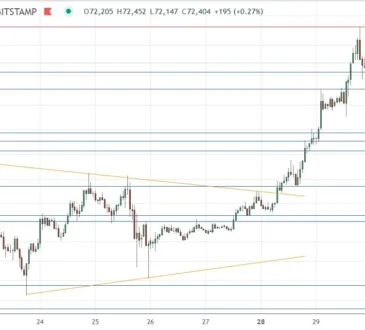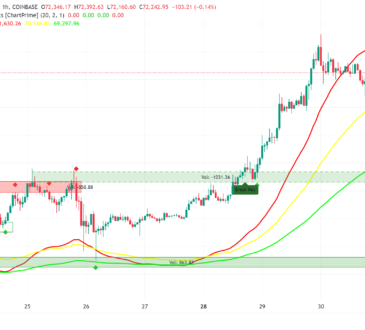Improving US economy and softening inflation may lead to Federal Reserve rate cuts, boosting investor confidence and weakening the dollar.
1. US Economic Data and Fed Policy
The recent economic data from the US has painted a more resilient picture of the economy than previously anticipated. Key indicators such as Retail Sales and Initial Jobless Claims have defied expectations, suggesting continued consumer strength and a robust labor market. These developments have led to a reassessment of the Federal Reserve’s monetary policy trajectory. While the central bank is still grappling with inflationary pressures, the easing of recessionary fears has opened the door for a less aggressive tightening path. Market participants are now pricing in a higher probability of a smaller rate hike, or even a potential rate cut, at the upcoming Federal Open Market Committee (FOMC) meeting.
2. Risk Appetite and Currencies
The improved economic outlook in the US has fostered a more optimistic market sentiment, characterized by increased risk appetite. As investors become more comfortable with the economic environment, they are shifting their portfolios away from safe-haven assets like the US Dollar and towards higher-yielding currencies and riskier assets. This has led to a depreciation of the US Dollar against major currencies such as the Euro and Pound Sterling. The overall trend reflects a growing confidence in the global economy and a reduced demand for safe-haven assets.
3. Gold Retreats Amidst Upbeat US Data
The recent strength in the US economy has had a dampening effect on gold prices. As economic indicators point to a more resilient economic landscape, investor concerns about a potential recession have subsided. This has reduced the demand for gold as a safe-haven asset. Additionally, the strengthening US Dollar, which typically has an inverse relationship with gold prices, has also contributed to the decline in gold’s value. The combination of these factors has led to a downward pressure on gold prices, as investors seek out riskier assets with higher potential returns.
– Advertisement –
Main Economic Events for next week:
High Impact Events
- RBA Meeting Minutes (08/20): This will provide insights into the Reserve Bank of Australia’s thinking behind its recent interest rate decision and offer clues about future monetary policy direction.
- FOMC Minutes (08/21): The release of the Federal Open Market Committee’s meeting minutes will shed light on the central bank’s internal discussions and deliberations regarding monetary policy, providing clues about future rate hikes.
- Jackson Hole Symposium (08/22-23): This annual economic symposium is highly anticipated for potential policy hints from central bank officials, particularly Federal Reserve Chair Jerome Powell.
- ECB Monetary Policy Meeting Accounts (08/22): This document will provide details of the European Central Bank’s discussions during its previous policy meeting, offering insights into their future monetary policy stance.
Medium Impact Events
- German Buba Monthly Report (08/19): This report will provide an overview of the German economy and the Bundesbank’s assessment of economic conditions.
- PBoC Interest Rate Decision (08/20): The People’s Bank of China’s interest rate decision will provide clues about the country’s monetary policy stance and its impact on the global economy.
- Eurozone Inflation Data (08/20): The release of inflation data for the Eurozone will be closely watched for signs of inflationary pressures and its potential impact on the European Central Bank’s monetary policy.
- BoC Consumer Price Index (08/20): This data will provide insights into the inflationary trends in Canada and impact expectations for the Bank of Canada’s monetary policy.
- US Consumer Sentiment (08/22): This report will measure consumer confidence in the US economy and provide insights into spending patterns.
- Eurozone PMI Data (08/22): This data will provide a snapshot of the manufacturing and services sectors in the Eurozone, offering insights into economic growth.
The subject matter and the content of this article are solely the views of the author. FinanceFeeds does not bear any legal responsibility for the content of this article and they do not reflect the viewpoint of FinanceFeeds or its editorial staff.
The information does not constitute advice or a recommendation on any course of action and does not take into account your personal circumstances, financial situation, or individual needs. We strongly recommend you seek independent professional advice or conduct your own independent research before acting upon any information contained in this article.





